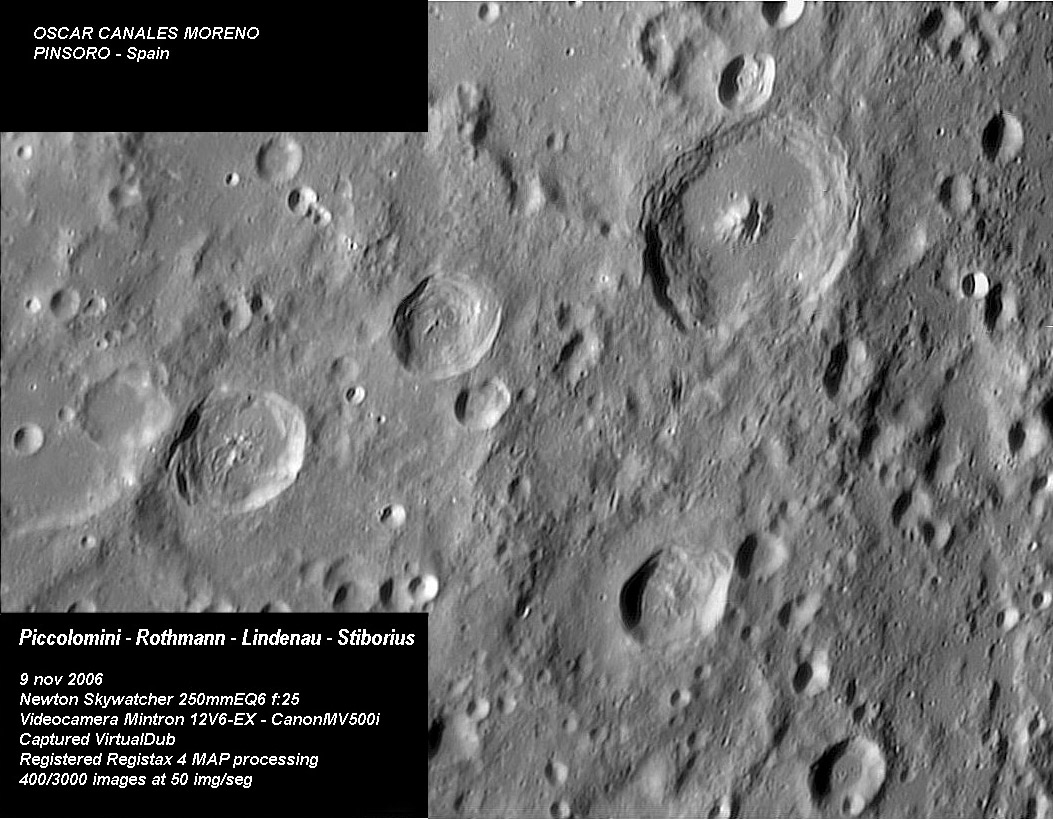|
|
| (9 intermediate revisions by the same user not shown) |
| Line 1: |
Line 1: |
| | __NOTOC__ | | __NOTOC__ |
| | =A Southeast Backwater= | | =A Southeast Backwater= |
| | + | <!-- Start of content --> |
| | + | <div class="post" id="post-727"> |
| | | | |
| − |
| + | <div class="storycontent"> |
| − | <div class="post" id="post-727">
| + | <p>[[File:LPOD_Piccolomini_Canales.jpg|LPOD_Piccolomini_Canales.jpg]]</p> |
| − |
| |
| − | <div class="storycontent">
| |
| − | <p>[[File:LPOD_Piccolomini_Canales.jpg|LPOD_Piccolomini_Canales.jpg]]</p>
| |
| | <p>image by[mailto:ocanales@able.es Oscar Canales Moreno], Pinsoro, Spain</p> | | <p>image by[mailto:ocanales@able.es Oscar Canales Moreno], Pinsoro, Spain</p> |
| | <p> | | <p> |
| − | Only one crater here is well enough known to be recognizable - Piccolomini, the Tycho-like crater striding the southeast end of the Altai Scarp. Piccolomini is a relatively fresh crater but lacks rays and secondary craters so is old enough to have had its smallest features erased by meteoritic bombardment. The three largest relatively fresh craters south and west of Piccolomini - Stibborius, Rothmann and Lindenau - are all 40-50 km diameter look-alikes with small central peaks and slumped walls. The rest of this scene is relatively non-descript older craters on top of each other. Some are probably secondaries from the formation of the Nectaris Basin and others are just random older impacts. A line of smaller secondaries south of Piccolomini appear to come from Stibborius, making it perhaps the youngest large crater in this area. In fact, this southeast quardrant of the Moon has few large to medium size young craters - rays are [http://www.lpi.usra.edu/resources/cla/info/y842/ rare], except for the [http://www.lpod.org/?m=20061008 headlights] near Stevinus. | + | Only one crater here is well enough known to be recognizable - Piccolomini, the Tycho-like crater striding the southeast end of the Altai Scarp. Piccolomini is a relatively fresh crater but lacks rays and secondary craters so is old enough to have had its smallest features erased by meteoritic bombardment. The three largest relatively fresh craters south and west of Piccolomini - Stibborius, Rothmann and Lindenau - are all 40-50 km diameter look-alikes with small central peaks and slumped walls. The rest of this scene is relatively non-descript older craters on top of each other. Some are probably secondaries from the formation of the Nectaris Basin and others are just random older impacts. A line of smaller secondaries south of Piccolomini appear to come from Stibborius, making it perhaps the youngest large crater in this area. In fact, this southeast quardrant of the Moon has few large to medium size young craters - rays are [http://www.lpi.usra.edu/resources/cla/info/y842/ rare], except for the [[October_8,_2006|headlights]] near Stevinus. |
| | </p> | | </p> |
| | <p>[mailto:tychocrater@yahoo.com Chuck Wood]</p> | | <p>[mailto:tychocrater@yahoo.com Chuck Wood]</p> |
| Line 17: |
Line 16: |
| | Rükl plates 67 & 58<br /> | | Rükl plates 67 & 58<br /> |
| | [http://www.lpi.usra.edu/resources/lunar_orbiter/images/img/iv_076_h3.jpg Lunar Orbiter IV view]</p> | | [http://www.lpi.usra.edu/resources/lunar_orbiter/images/img/iv_076_h3.jpg Lunar Orbiter IV view]</p> |
| − | <p align="center"> | + | <p><b>Yesterday's LPOD:</b> [[November 19, 2006|Where's Clavius?]] </p> |
| − | <i>Now you can support LPOD when you buy ANY book from Amazon thru [http://www.lpod.org/?page_id=102 LPOD!]</i></p> | + | <p><b>Tomorrow's LPOD:</b> [[November 21, 2006|A Basin to Study]] </p> |
| − | </div>
| + | <!-- Removed reference to store page 2 --> |
| − |
| + | </div> |
| − | | + | <!-- End of content --> |
| − | ---- | + | {{wiki/ArticleFooter}} |
| − | ===COMMENTS?===
| |
| − | Click on this icon [[image:PostIcon.jpg]] at the upper right to post a comment.
| |




